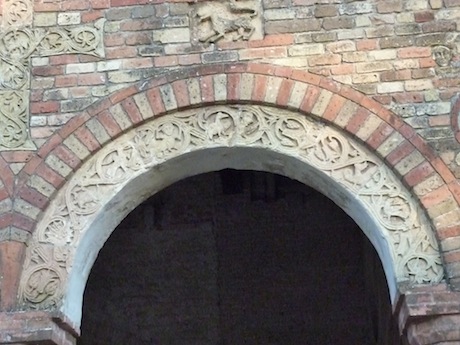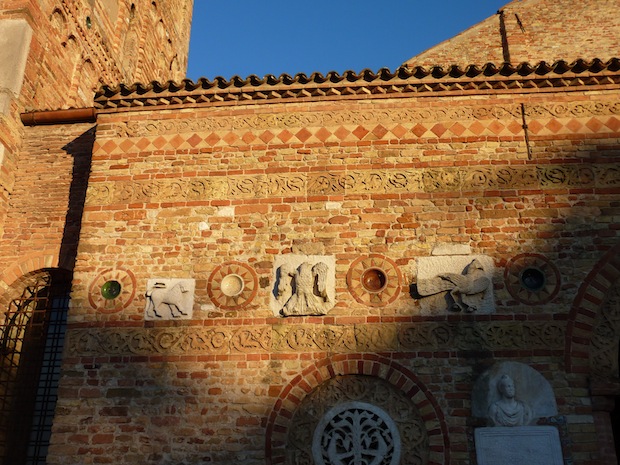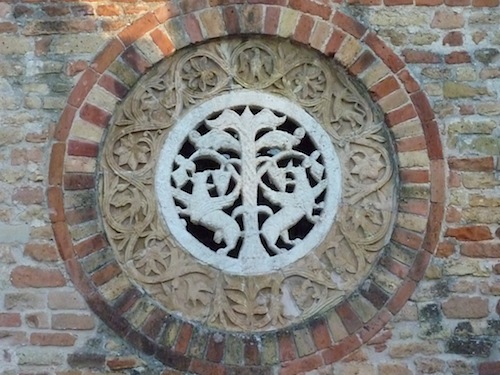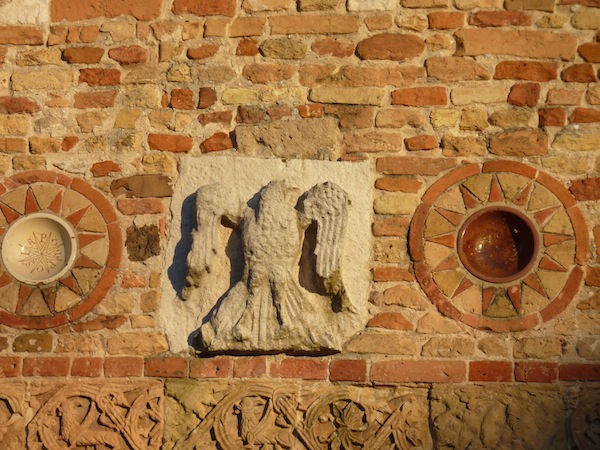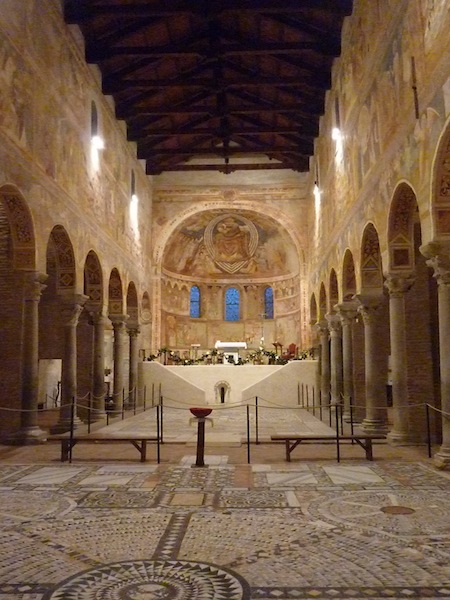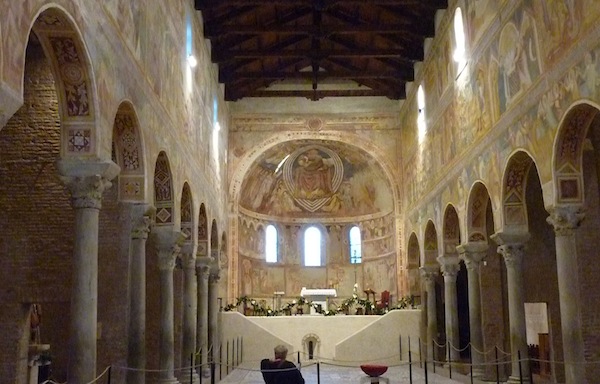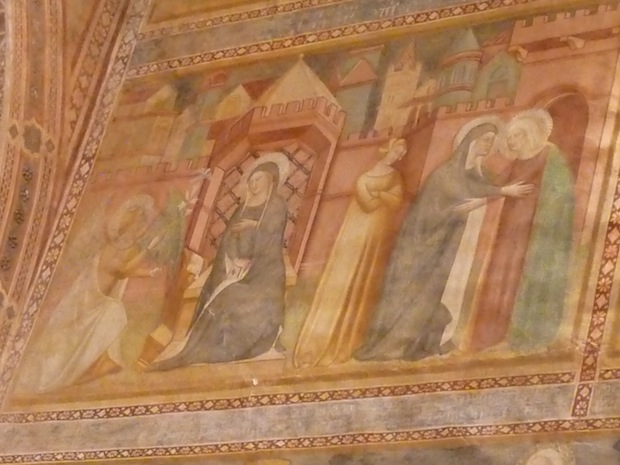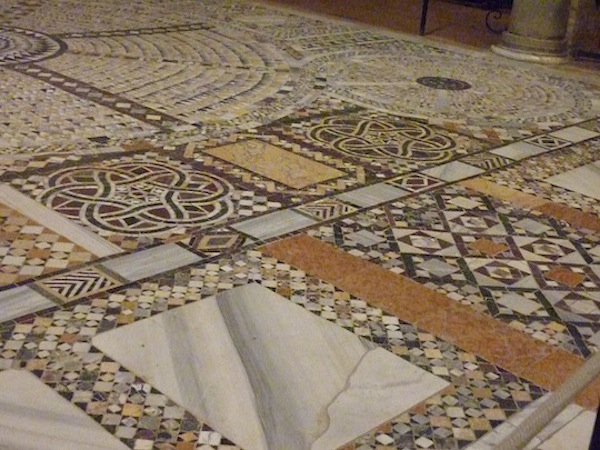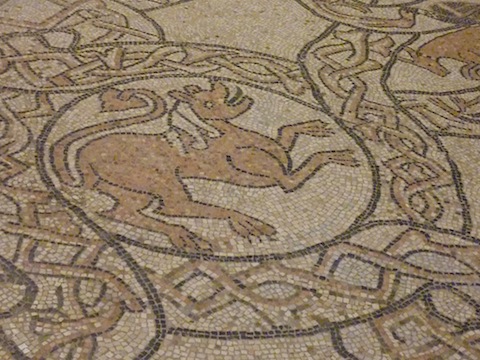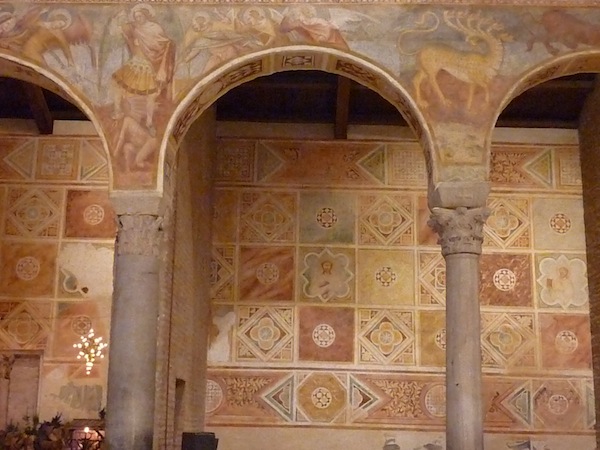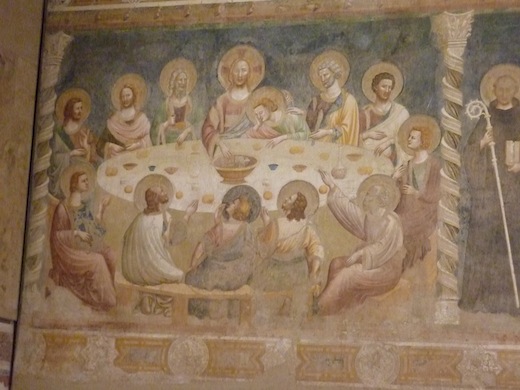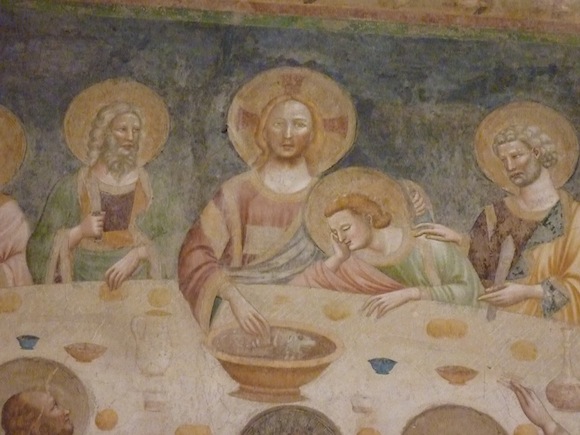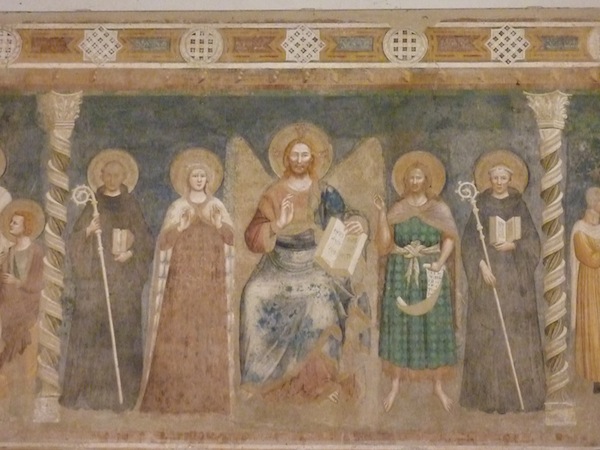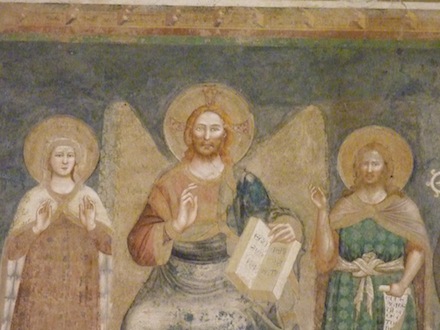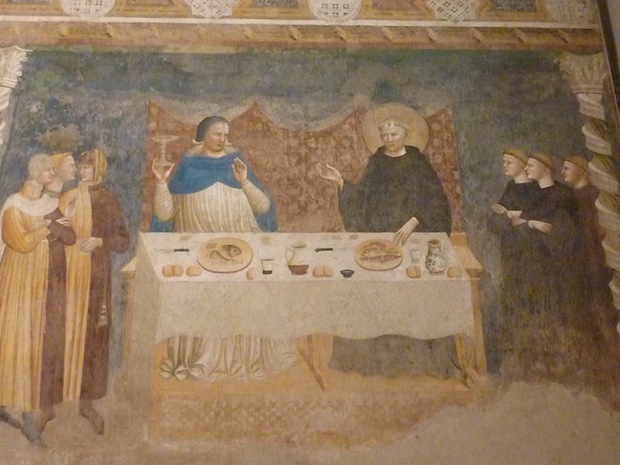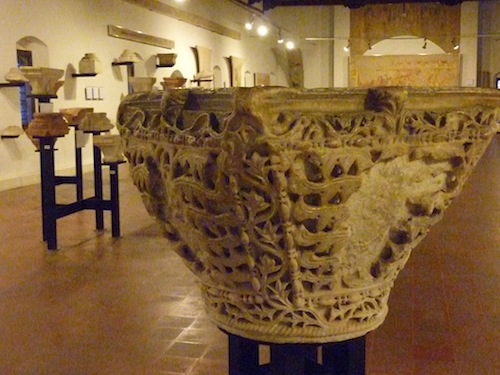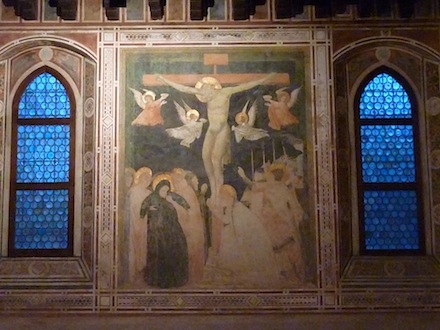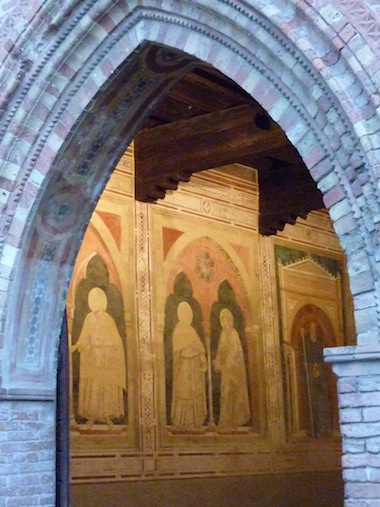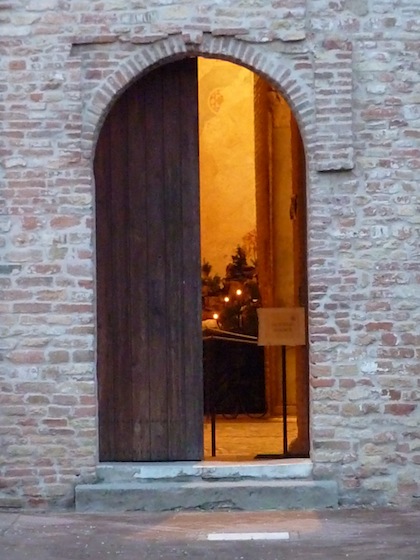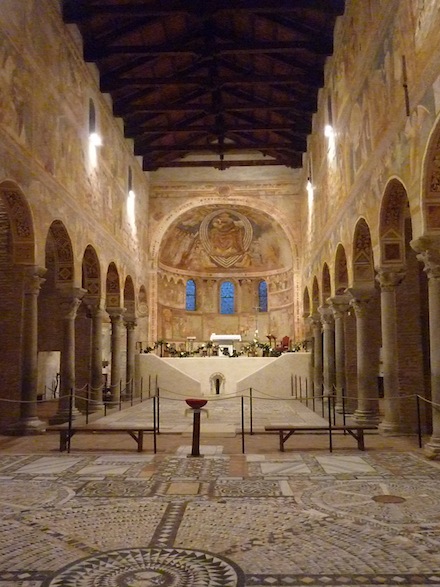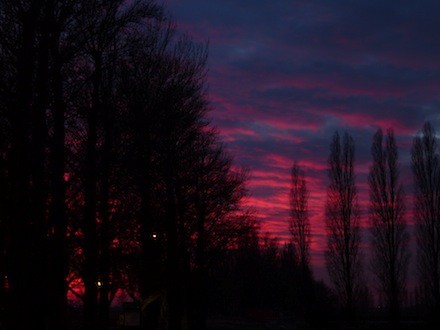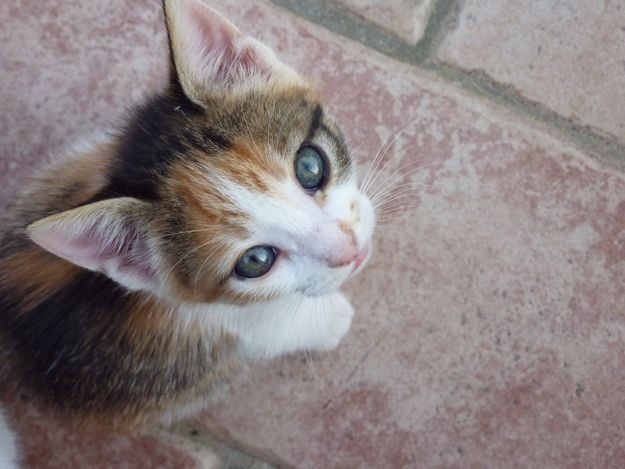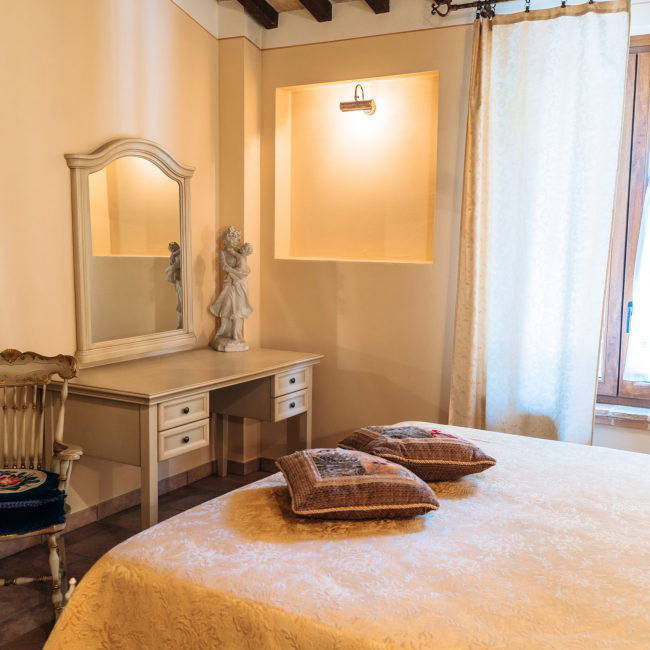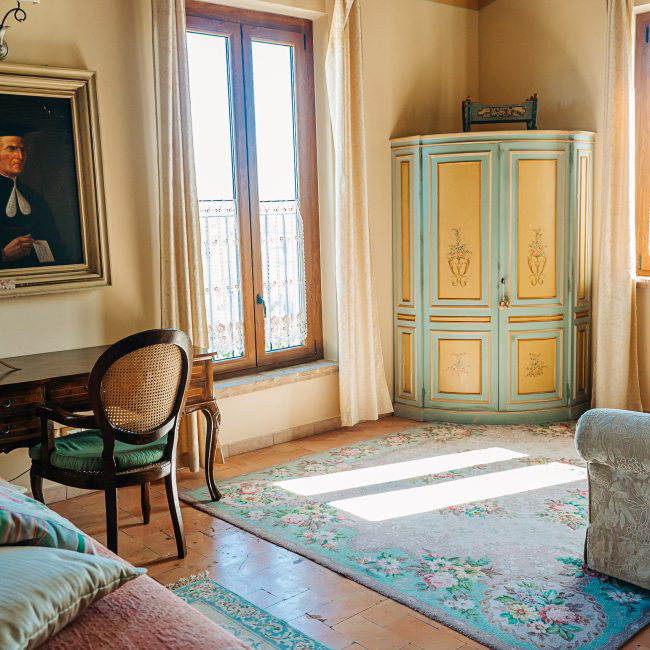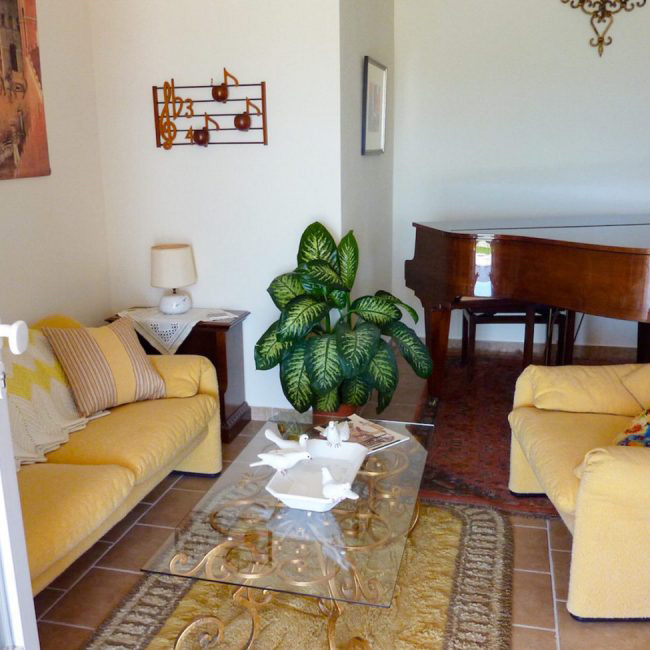A masterpiece of Romanesque art, the Pomposa Abbey 35 kilometers northeast of Ferrara is visible from quite a distance with its towering campanile that dominates the surrounding countryside much like a lighthouse in the sea of green countryside. Its noble, isolated location adds to its magic – to its sublime atmosphere.
Bell Tower of the Abbey of Pomposa
The 48-meter high campanile next to the church was built in 1063 by the architect Deusdedit. Each of its nine levels has windows that are wider than the level below it, giving the building a light and soaring appearance. The red and yellow bricks have interesting inserts of ceramic bowls – something we have never seen elsewhere – coming from various parts of the Mediterranean such as Egypt, Tunisia and Sicily.
The Church
We entered the church from the richly decorated portico in terracotta, marble and colorful majolica tiles. Built between the 8th and 9th centuries, it was clearly influenced by the Ravenna-style basilicas of the same period. The graceful portico is decorated with geometric designs, concentric circles and with stone-carved animal figures and floral motifs.
one of the portico arches
late afternoon December light glows on the gorgeous portico façade
an unusual example of an early Romanesque rose window
a couple of the unusual inserts of majolica bowls on the portico façade…(and on the campanile)
As striking as the isolated location, the portico decorations and campanile were, we were nevertheless not prepared for the overwhelming beauty and majesty of the interior.
The apse boasts the 1351 fresco, Christ in Glory, by Vitale da Bologna. Directly below are the Evangelists, the Dottori of the Church and the fresco cycle dedicated to the life of Saint Eustace.
Intriguing and well-preserved frescoes from the 1300s are in three registers that run along the side walls of the central nave. The upper register depicts scenes from the Old Testament, the middle one narrates scenes from the New Testament while the lower one, at the level of and interrupted by the arches, represents scenes from Saint John’s Apocalypse.
Across the peaceful inner courtyard is the large Refectory which houses three well-conserved frescoes: The Last Supper, Christ Enthroned with the Virgin Mary, Saint John the Baptist and the Saints Benedict and Guy and The Miracle of Saint Guy, who transforms water into wine in the presence of the Archbishop Gebeardo of Ravenna.
The Last Supper
detail of Last Supper
Christ Enthroned with the Virgin Mary, Saint John the Baptist and the Saints Benedict and Guy
detail of Christ Enthroned
The Miracle of Saint Guy
The Pomposa Museum
The Museum is housed in what was once the dormitory. There are pieces from excavations and restoration works: inscriptions, marbles, and rare stuccoes from the original decorations of the church, majolica tiles and archaeological finds of various types…as well as some detached frescoes.
a last glimpse of the church
This fiery sunset greeted us as we walked out of the church. We were off to Ferrara with lingering images of the beauty of Pomposa.


